John Hurrell – 18 June, 2013
The mood from these images is very different from her earlier works referencing fairytales - with their cottages in the woods, prancing white horses etc. There is a sense now of invention based on everyday living, in a domestic environment - of excitement in normally mundane visual occurrences, and how, embracing the commonplace, this can be transmuted without escapism.
In the Ivan Anthony Gallery, three rooms overlooking Karangahape Road, Saskia Leek is showing ten or so small framed canvases. Most have a pale tinted palette and are restrained compositions depicting autumn motifs like falling leaves in the cool fresh colours of emerging spring. The witty imagery mixes indoors and outdoors together, flapping washing in interiors, leaves descending in arched hallways or floating over bottles on table tops.
With a stencil-like directness, these shape oriented paintings are unabashedly decorative with lots of lulling curvaceous rhythms and softly glowing harmonies. Like yellow pineapple TT2s they exude a fruity flavoured optimism that circles around and dominates the ambiguity of the show’s title: Peace Leaves as a utopian prayer summonsing the power of nature, or perhaps Peace Leaves as a cry of despair.
Even though they emphasise the expressive potential of carefully positioned shape, because the paint itself is thin, with brushmark textures accentuated in sensitive underpainting, there is a lot of nuance. They require close proximity to enjoy properly.
These paintings celebrate the clear vibrant colours of seasonal changes in a tight way, exploiting edge and tonal contrast, and the mood from these images is very different from her earlier works referencing fairytales - with their cottages in the woods, prancing white horses etc. There is a sense now of invention based on everyday living, in a domestic environment - of excitement in normally mundane visual occurrences, and how, embracing the commonplace, this can be transmuted without escapism. With a title like Peace Leaves there is also of course a sense of global community, a desire for social harmony - as well as chromatic co-ordination.
This is a far cry from the snotty brattyness, a stroppy (but funny) irritability found in Leek’s very early vinyl paintings with their interest in clubhouses and girl gangs. The current works seem alarmingly responsible. So genial, so adult, so mature. Inevitably perhaps twenty years later, something has been lost.
John Hurrell
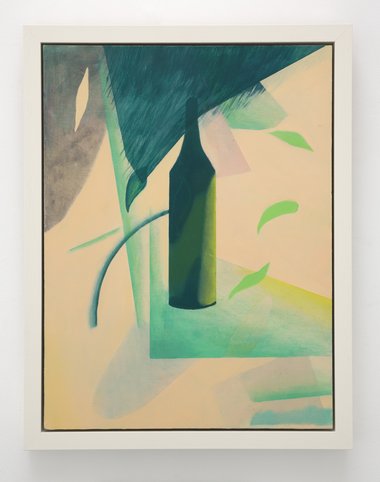
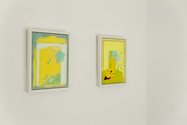
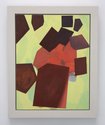

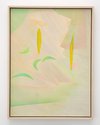
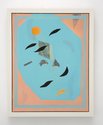


 Two Rooms presents a program of residencies and projects
Two Rooms presents a program of residencies and projects Advertising in this column
Advertising in this column



This Discussion has 0 comments.
Comment
Participate
Register to Participate.
Sign in
Sign in to an existing account.